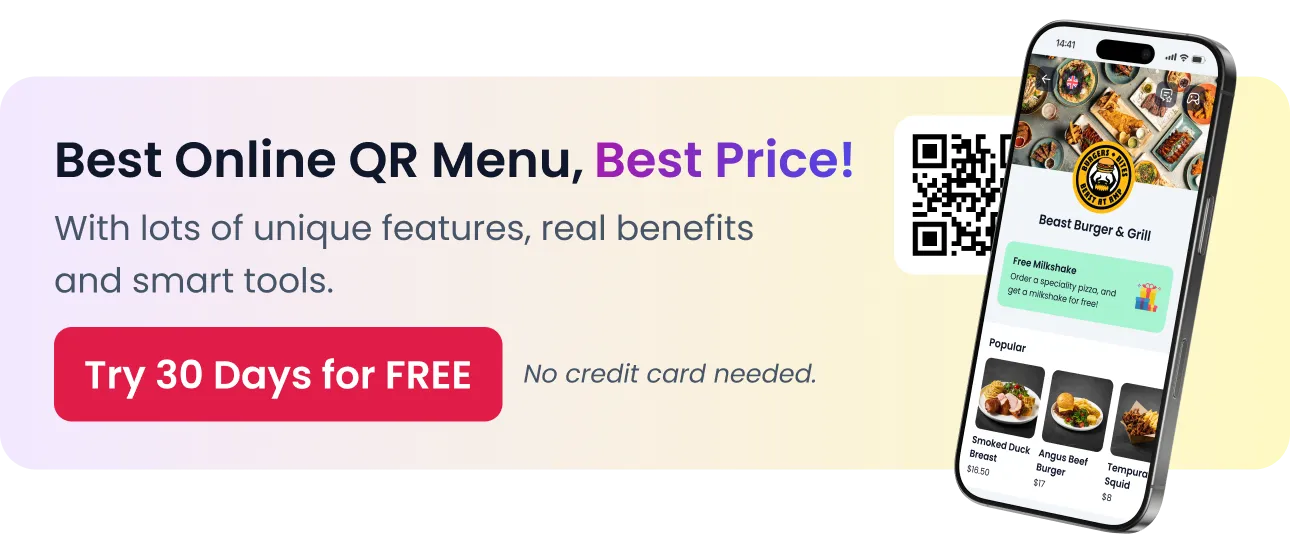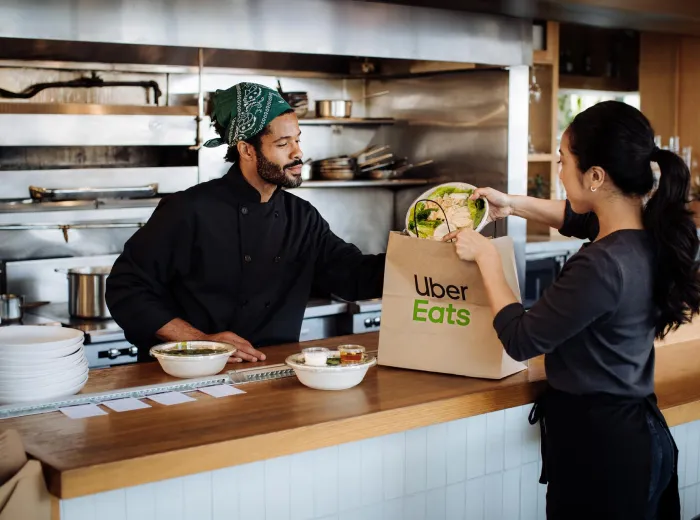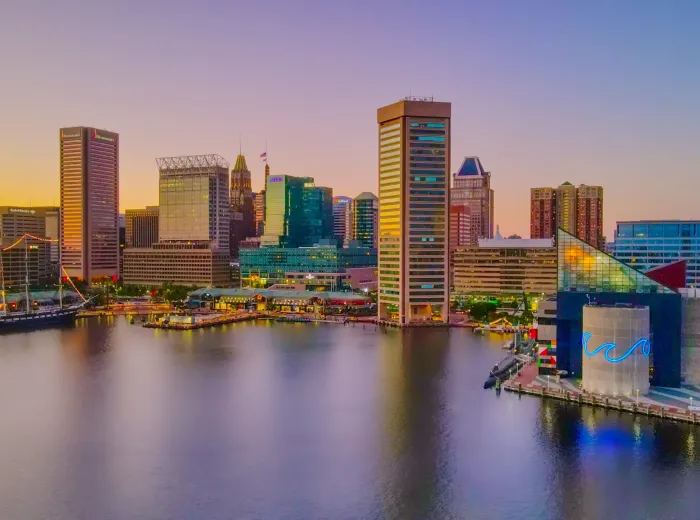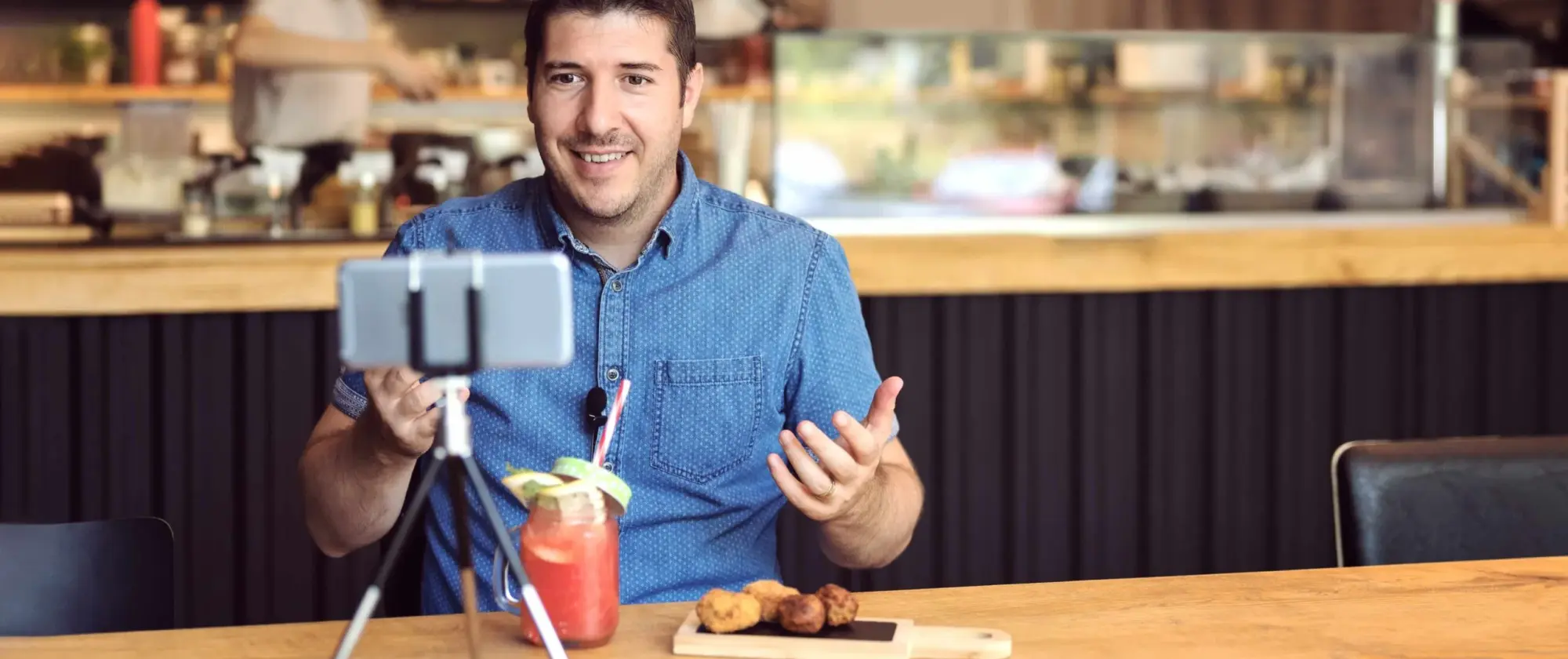
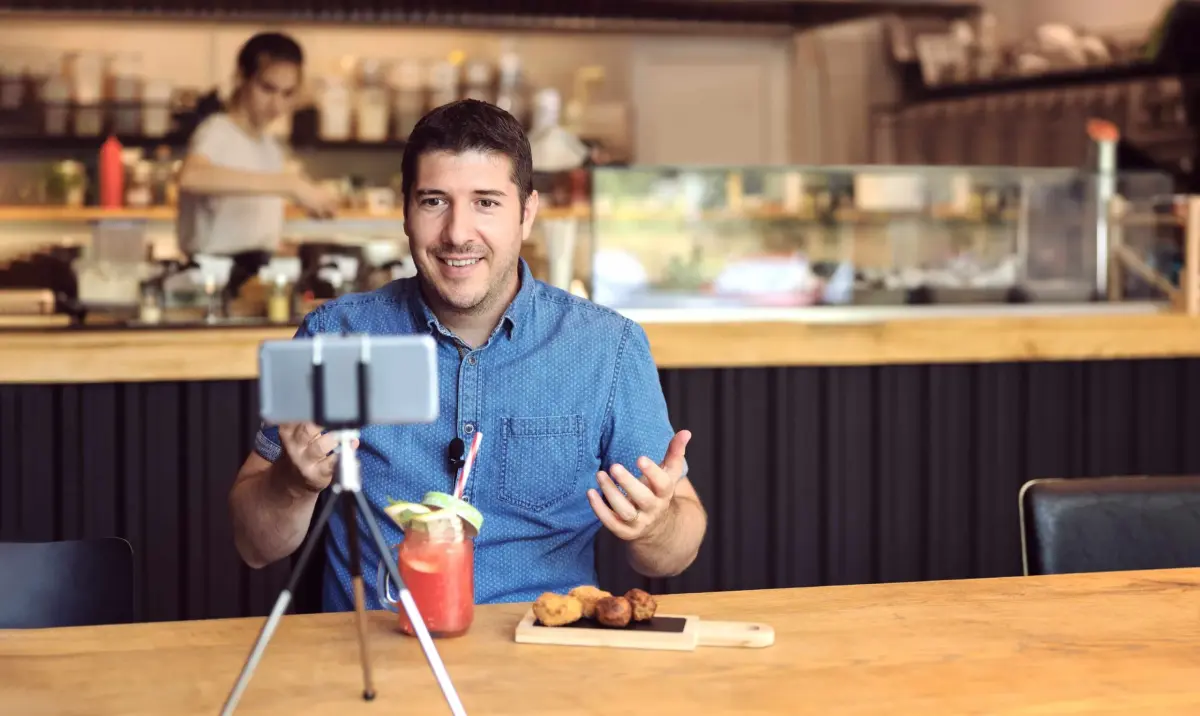
How to Work with Food Influencers for Your Restaurant? | Insider Tips
In the ever-evolving world of restaurant marketing, food influencers have become powerful allies for businesses looking to captivate new audiences. Their ability to showcase culinary creations, dining experiences, and unique restaurant vibes to engaged followers makes them invaluable to any marketing strategy. Whether you’re running a cozy café, a trendy bistro, or a fine-dining establishment, partnering with the right influencers can significantly enhance your visibility and attract loyal customers.
The appeal of influencer marketing lies in its authenticity. Unlike traditional advertisements, food influencers share genuine experiences, allowing potential customers to envision themselves enjoying your dishes. From professional food photographers to local foodies, there’s an influencer for every type of restaurant and marketing goal. But how do you navigate this dynamic landscape to create successful collaborations?
This guide will walk you through the essentials of working with food influencers, from identifying the right partners to executing impactful campaigns. By the end, you’ll have actionable insights to build strong relationships, avoid common pitfalls, and maximize your return on investment with influencer marketing.
Let’s explore how you can leverage the power of food influencers to take your restaurant’s marketing strategy to the next level.
What Are Food Influencers and Why They Matter?
Food influencers have transformed the way customers discover and engage with restaurants. By sharing their dining experiences with followers, these influencers create a bridge between your restaurant and potential customers. They combine storytelling, stunning visuals, and authentic reviews, making their recommendations highly persuasive. Understanding the different types of food influencers and their value is key to leveraging their potential effectively.
Definition of Food Influencers
Food influencers are individuals who share content about food, dining, and related topics with a loyal audience on social media, blogs, or other platforms. They use their expertise and unique voice to influence their followers’ decisions about where to dine, what to eat, and which cuisines to try.
- Examples of platforms where food influencers thrive:
- Instagram: Perfect for eye-catching food photos and reels.
- YouTube: Ideal for in-depth restaurant reviews and cooking tutorials.
- TikTok: Great for short, engaging, and trend-driven content.
Food influencers don’t just showcase food—they build trust with their audience by providing authentic opinions and experiences.
Types of Food Influencers
Different types of influencers cater to varying restaurant needs. Understanding their unique traits helps you select the best fit for your marketing goals.
- Macro Influencers:
- Audience Size: 100K+ followers.
- Best For: High-budget campaigns targeting a wide audience.
- Example: National or global food bloggers with high visibility.
- Value: Wide reach but may lack personal connection with followers.
- Micro Influencers:
- Audience Size: 10K–100K followers.
- Best For: Engaging local or niche audiences.
- Example: A regional food enthusiast with a dedicated following.
- Value: Higher engagement rates and authenticity.
- Nano Influencers:
- Audience Size: 1K–10K followers.
- Best For: Community-focused marketing with a personal touch.
- Example: Local foodies who review neighborhood restaurants.
- Value: Extremely authentic and relatable.
- Celebrity Influencers:
- Audience Size: Millions of followers.
- Best For: Major campaigns or brand launches.
- Example: Famous chefs or celebrities with food-related content.
- Value: Massive reach but often costly and less personal.
Choosing the right influencer type depends on your restaurant’s size, budget, and target audience.
The Role of Food Influencers in Modern Marketing
Food influencers are not just content creators—they are storytellers who help your brand build trust and engage with customers on a deeper level.
- How they add value:
- Amplify your restaurant’s unique selling points (USPs) to a targeted audience.
- Create buzz around menu launches, special events, or seasonal offers.
- Increase visibility through authentic, shareable content.
In today’s digital-first world, food influencers offer an unmatched ability to connect your brand with diners in an authentic and impactful way.
Key Benefits of Partnering with Food Influencers
Working with food influencers offers both immediate and long-term benefits for your restaurant. Here’s why they matter:
- Increased Brand Awareness:
- Influencers expose your restaurant to new audiences that may have never heard of you.
- Higher Customer Trust:
- Followers trust influencer recommendations more than traditional advertisements.
- Boosted Foot Traffic and Sales:
- Posts and reviews can inspire immediate visits and online reservations.
- SEO and Online Visibility:
- Content featuring your restaurant often ranks in search results, driving organic traffic.
By partnering with the right food influencers, your restaurant can stay competitive and relevant in an increasingly digital marketplace.
Identifying the Right Food Influencers for Your Brand
Selecting the perfect food influencer for your restaurant is a critical step in crafting a successful marketing campaign. The ideal influencer aligns with your brand’s identity, resonates with your target audience, and has a proven track record of creating engaging and authentic content. Let’s break this down into actionable steps.
Assessing Your Restaurant’s Target Audience
Understanding your audience is the foundation of influencer marketing. Knowing who you want to reach ensures you choose influencers who can effectively connect with them.
- Key questions to ask:
- What age group and demographics does your restaurant appeal to?
- Are your customers foodies, casual diners, or fine-dining enthusiasts?
- Which social media platforms does your audience frequent?
For example, if your target audience is young professionals, focusing on Instagram or TikTok influencers may be most effective. Aligning influencer choices with your audience helps maximize engagement and results.
Characteristics of an Ideal Influencer
Not all influencers are created equal. Prioritizing key traits ensures your collaboration is both effective and genuine.
- Engagement Rate:
- Influencers with high engagement rates often have more loyal followers.
- Check likes, comments, shares, and saves on their posts to assess this.
- Authenticity:
- Influencers with authentic, relatable content build trust with their audience.
- Look for those who genuinely love food and share unfiltered reviews.
- Niche Alignment:
- Choose influencers whose style matches your brand.
- For example, a farm-to-table restaurant should collaborate with eco-conscious influencers.
By vetting influencers for these characteristics, you can avoid partnerships that lack authenticity or alignment with your goals.
Where to Find Food Influencers
Finding the right influencers involves exploring platforms and communities where food content thrives. Here are some of the best methods:
- Social Media Platforms:
- Use Instagram hashtags like #Foodie, #RestaurantReview, or #YourCityEats.
- Explore TikTok trends related to food and dining.
- Influencer Marketing Platforms:
- Platforms like Upfluence or AspireIQ help you discover influencers based on niche, audience size, and location.
- Local Foodie Communities:
- Attend food festivals or check local food blogs.
- Connect with local influencers who actively review restaurants in your area.
Each of these channels offers a unique opportunity to discover influencers who align with your brand’s values and objectives.
Characteristics to Avoid
While finding the right influencer is crucial, it’s equally important to avoid potential red flags:
- Inconsistent Posting:
- Influencers who post sporadically may not maintain an engaged audience.
- Unoriginal Content:
- Avoid influencers who lack creativity or rely heavily on brand collaborations without authenticity.
- Questionable Follower Metrics:
- Look out for fake followers or bots that inflate numbers without real engagement.
Taking the time to research and evaluate potential influencers ensures your collaboration is impactful, resonates with your target audience, and drives meaningful results for your restaurant.
Building Strong Relationships with Food Influencers
Creating a mutually beneficial relationship with food influencers requires thoughtful planning and communication. Successful collaborations go beyond one-off campaigns and evolve into long-term partnerships built on trust, shared goals, and clear expectations.
Effective Ways to Approach Influencers
Reaching out to influencers effectively sets the tone for a successful collaboration. A thoughtful approach demonstrates your professionalism and commitment.
- Crafting Personalized Outreach Messages:
- Address the influencer by name and mention specific content of theirs that you admire.
- Highlight why you believe they are a great fit for your brand. For example:
“Your recent post about [similar restaurant type] really resonated with us, and we’d love to collaborate with you on showcasing our new menu.” - Avoid generic messages that feel impersonal or spam-like.
- Highlighting Mutual Benefits:
- Clearly explain what the influencer will gain from the partnership, such as:
- Free meals or exclusive tastings.
- Financial compensation.
- Cross-promotion on your platforms.
- Emphasize the value they bring to your brand to make the offer appealing.
- Clearly explain what the influencer will gain from the partnership, such as:
Establishing an approachable yet professional tone makes influencers more likely to respond positively.
Negotiating Collaborations
Transparent and fair negotiations lay the groundwork for a successful partnership. Both parties should have clear expectations from the start.
- Types of Compensation:
- Free Meals: Perfect for micro and nano influencers who value authentic dining experiences.
- Financial Payments: Standard for macro or celebrity influencers. Ensure rates align with market trends.
- Event Invitations: Hosting influencers at exclusive openings or menu launches provides unique experiences.
- Setting Clear Expectations:
- Define the scope of work, including:
- Number of posts, stories, or videos.
- Specific hashtags or captions to use.
- Deadlines for posting content.
- Outline deliverables in a simple agreement to avoid misunderstandings.
- Define the scope of work, including:
Clear communication during negotiations ensures both parties are aligned and satisfied with the terms.
Maintaining Long-Term Partnerships
Turning short-term collaborations into long-lasting partnerships benefits both your brand and the influencer.
- Regular Engagement:
- Stay in touch with influencers by:
- Commenting on their posts.
- Inviting them to future events or seasonal launches.
- Build rapport through meaningful interactions beyond business.
- Stay in touch with influencers by:
- Exclusive Opportunities:
- Offer long-term influencers perks such as:
- First access to new menu items.
- VIP treatment at events.
- Making them feel valued fosters loyalty and encourages continued collaboration.
- Offer long-term influencers perks such as:
- Continuous Feedback and Improvement:
- Share campaign results and discuss areas for improvement.
- Be open to their suggestions, as influencers often know what resonates with their audience.
Investing time and effort into building strong relationships with influencers helps your restaurant maintain a positive brand image and fosters impactful marketing campaigns that drive results.
Types of Collaborations with Food Influencers
Working with food influencers offers diverse opportunities to promote your restaurant. By leveraging their unique strengths and platforms, you can create engaging campaigns that highlight your brand and attract new customers. Here are the most effective types of collaborations with food influencers.
Sponsored Content and Reviews
Sponsored posts and reviews are among the most common ways to collaborate with food influencers. These campaigns showcase your offerings through authentic storytelling.
- How it works:
- Influencers create content featuring your dishes, ambiance, or special events.
- Posts may include photos, videos, and detailed captions describing their experience.
- Benefits:
- Builds credibility with their audience through personal recommendations.
- Increases visibility on platforms like Instagram, TikTok, or YouTube.
For example, an influencer might share an Instagram Reel reviewing your signature dish, helping to generate interest and foot traffic.
Hosting Influencer Events
Organizing exclusive events for influencers creates buzz and provides them with unique content to share.
- Event ideas:
- Menu tastings for upcoming dishes.
- Behind-the-scenes tours of your kitchen or bar.
- Themed dining nights or grand openings.
- Why it works:
- Generates real-time content across multiple platforms.
- Encourages influencers to network and cross-promote your brand.
Hosting influencer events positions your restaurant as an exciting and innovative destination.
Social Media Takeovers
Allowing influencers to take over your social media accounts for a day can bring fresh energy to your online presence.
- How it works:
- Influencers post stories, videos, or updates directly to your restaurant’s account.
- They share their experience in real-time, offering followers a behind-the-scenes look.
- Benefits:
- Introduces your account to the influencer’s audience.
- Adds variety to your content with a personal touch.
Social media takeovers create an immersive experience that keeps your followers engaged.
Exclusive Promotions and Discount Codes
Influencers can drive sales by offering their followers exclusive promotions tied to your restaurant.
- Ideas for promotions:
- Discount codes like “FOODIE10” for 10% off the bill.
- Limited-time offers such as a free dessert with a specific order.
- Why it’s effective:
- Encourages immediate action by creating a sense of urgency.
- Tracks campaign performance by monitoring code usage.
These promotions not only boost revenue but also make followers feel like part of an exclusive community.
Collaborating with food influencers in these ways helps amplify your restaurant’s presence and builds lasting relationships with both influencers and their audiences.
Crafting a Strategy for Influencer Marketing
A well-planned strategy ensures your influencer marketing campaigns deliver measurable results. From defining objectives to creating detailed guidelines, having a clear roadmap helps you maximize the impact of your collaborations with food influencers.
Setting Clear Goals and Objectives
Defining your goals is the first step to creating a focused and effective influencer marketing campaign.
- Common goals include:
- Increasing brand awareness.
- Boosting foot traffic to your restaurant.
- Driving online reservations or delivery orders.
- Promoting specific events, menu launches, or seasonal specials.
- Make goals SMART:
- Specific: Define what success looks like (e.g., “Increase Instagram followers by 20% in three months”).
- Measurable: Use metrics such as engagement rates, clicks, or sales.
- Achievable: Set realistic targets based on your budget and resources.
- Relevant: Ensure the goals align with your overall marketing strategy.
- Time-bound: Establish deadlines to evaluate progress.
Having clear objectives keeps your campaign aligned with your restaurant’s broader business goals.
Budgeting for Influencer Campaigns
Allocating a realistic budget ensures you can partner with influencers who align with your restaurant’s goals.
- Factors to consider when budgeting:
- Type of influencers (nano, micro, macro, or celebrity).
- Compensation structure (free meals, payments, or event invitations).
- Additional expenses, such as content production or event hosting.
- Example budget breakdown:
- 50%: Influencer fees.
- 30%: Event costs or product samples.
- 20%: Promotion and tracking tools.
A well-thought-out budget prevents overspending while ensuring quality collaborations.
Developing Campaign Guidelines
Providing influencers with clear guidelines ensures their content aligns with your brand’s messaging and goals without stifling their creativity.
- What to include in your guidelines:
- Content Themes:
- Showcase signature dishes, ambiance, or unique dining experiences.
- Focus on storytelling that reflects your restaurant’s personality.
- Posting Requirements:
- Specify the number of posts, stories, or reels.
- Include preferred hashtags, geotags, and mentions (e.g., @YourRestaurantHandle).
- Visual Style:
- Maintain a consistent aesthetic (e.g., bright and vibrant or cozy and warm).
- Request high-quality photos or videos.
- Content Themes:
- Do’s and Don’ts for influencers:
- Do: Share authentic experiences and highlight what makes your restaurant unique.
- Don’t: Exaggerate or make false claims about your offerings.
Well-defined guidelines create a balance between creative freedom and brand consistency, ensuring a cohesive campaign.
Creating a solid influencer marketing strategy empowers you to build successful campaigns that resonate with your target audience and drive meaningful results for your restaurant.
Monitoring and Measuring Campaign Success
To determine the effectiveness of your influencer marketing campaigns, it’s essential to track performance and analyze results. By monitoring key metrics, using the right tools, and adjusting strategies as needed, you can ensure a high return on investment.
Key Metrics to Track
Measuring the right metrics allows you to assess the success of your campaign and identify areas for improvement.
- Engagement Rates:
- Monitor likes, comments, shares, and saves on influencer posts.
- High engagement indicates the content resonates with the audience.
- Traffic from Social Media:
- Use UTM parameters or tracking links to measure how many visitors come to your website or online reservation system from influencer posts.
- Revenue Impact:
- Track sales generated from exclusive discount codes or promotions tied to the campaign.
- Follower Growth:
- Measure increases in your social media followers and overall audience reach during the campaign.
Tracking these metrics helps you understand the direct impact of your influencer partnerships on your restaurant’s goals.
Tools for Analytics and Reporting
Using the right tools makes it easier to collect data and generate actionable insights.
- Recommended tools:
- Google Analytics: Track website traffic and conversions from influencer campaigns.
- Social Media Insights: Use built-in analytics on Instagram, Facebook, or TikTok to measure post performance.
- Influencer Marketing Platforms: Tools like AspireIQ or Upfluence provide detailed metrics on influencer reach and engagement.
- Benefits of reporting tools:
- Automate data collection to save time.
- Generate comprehensive reports to share with stakeholders or refine strategies.
Analytics tools help you measure success accurately and demonstrate the value of influencer collaborations.
Adjusting Strategy Based on Results
Analyzing campaign performance allows you to refine your approach for future collaborations.
- Identify strengths:
- Highlight which types of content performed best (e.g., photos, videos, or stories).
- Note influencers who drove the most engagement or traffic.
- Address weaknesses:
- Review campaigns that didn’t meet expectations and identify what went wrong.
- Adjust factors like influencer selection, posting schedules, or content themes.
- Iterate and improve:
- Use A/B testing to experiment with different approaches in future campaigns.
- Continuously refine your strategy based on real data and audience behavior.
By monitoring and measuring campaign success, you can make informed decisions that maximize the effectiveness of your influencer marketing efforts.
Avoiding Common Mistakes When Working with Influencers
While influencer marketing can be highly effective, certain pitfalls can hinder the success of your campaigns. By being aware of these common mistakes and learning how to avoid them, you can ensure your collaborations with food influencers yield positive results.
Focusing Too Much on Follower Count
One of the most common mistakes is prioritizing influencers with large followings over those with engaged and loyal audiences.
- Why it’s a problem:
- High follower counts don’t always translate into high engagement or conversions.
- Influencers with fake followers or bots can inflate numbers without delivering real value.
- How to avoid it:
- Focus on engagement rates and audience quality over sheer numbers.
- Choose influencers who interact authentically with their followers and align with your target market.
An engaged micro or nano influencer often delivers better results than a disengaged macro influencer.
Ignoring Content Quality and Authenticity
Partnering with influencers who produce low-quality or inauthentic content can damage your brand’s reputation.
- Why it’s a problem:
- Poor visuals or insincere endorsements may fail to capture your restaurant’s true essence.
- Audiences are quick to detect when influencers are not genuinely excited about a product or service.
- How to avoid it:
- Review an influencer’s previous content to ensure it meets your quality standards.
- Collaborate with influencers who share authentic reviews and genuinely enjoy your offerings.
Authentic, high-quality content is more likely to build trust and inspire action.
Failing to Communicate Expectations Clearly
Unclear or incomplete communication can lead to misunderstandings and subpar campaign results.
- Why it’s a problem:
- Influencers may produce content that doesn’t align with your brand or campaign goals.
- Missed deadlines or inconsistent messaging can reduce the campaign’s impact.
- How to avoid it:
- Provide detailed briefs outlining your expectations, including:
- Campaign goals.
- Required content formats (e.g., photos, videos, stories).
- Specific hashtags, mentions, or geotags.
- Establish deadlines and approval processes to ensure alignment.
- Provide detailed briefs outlining your expectations, including:
Clear communication fosters a smoother collaboration and better outcomes.
Neglecting FTC Guidelines
Failing to adhere to disclosure regulations can result in legal issues and damage your restaurant’s credibility.
- Why it’s a problem:
- The Federal Trade Commission (FTC) requires influencers to disclose paid collaborations to maintain transparency with their audiences.
- Non-compliance can lead to fines and erode trust with potential customers.
- How to avoid it:
- Ensure influencers include appropriate disclosures, such as:
- “#ad” or “#sponsored” in captions.
- Verbal disclosures in video content.
- Educate yourself and your influencers about the latest FTC guidelines.
- Ensure influencers include appropriate disclosures, such as:
Transparency not only keeps you compliant but also builds trust with your audience.
Avoiding these common mistakes helps you create seamless and successful collaborations with food influencers, ensuring your campaigns are impactful, ethical, and aligned with your brand’s vision.
Trends in Food Influencer Marketing
The landscape of food influencer marketing is constantly evolving, driven by changes in consumer behavior and social media platforms. Staying updated on the latest trends ensures your campaigns remain relevant and impactful. Here are some key trends shaping the world of food influencer marketing.
Rise of Local and Hyper-Local Influencers
Local influencers are becoming increasingly important as diners prioritize nearby and community-based recommendations.
- Why it matters:
- Local influencers have strong connections with their regional audience, making their recommendations more relatable and trusted.
- They are ideal for promoting smaller, neighborhood-focused restaurants.
- How to leverage this trend:
- Collaborate with influencers who actively engage in your city or neighborhood’s food scene.
- Invite them to exclusive tastings or community events to showcase your offerings.
Hyper-local influencers are particularly effective for targeting niche markets and driving foot traffic.
Video Content as a Game-Changer
Video content continues to dominate social media, with platforms like TikTok, Instagram Reels, and YouTube leading the way.
- Why it matters:
- Videos provide dynamic and immersive storytelling, capturing the full dining experience.
- Short-form videos often go viral, amplifying your restaurant’s reach.
- How to leverage this trend:
- Partner with influencers skilled in creating engaging food videos, such as recipe tutorials or restaurant tours.
- Encourage influencers to showcase menu highlights, unique presentation styles, or behind-the-scenes footage.
Investing in video-driven campaigns helps your restaurant stand out in a competitive market.
Collaborations Beyond Social Media
Food influencer collaborations are expanding beyond social media platforms, offering new opportunities for engagement.
- Examples of extended collaborations:
- Pop-up Events: Influencers host or promote exclusive dining experiences at your restaurant.
- Merchandise Partnerships: Collaborate with influencers to create branded items, such as custom aprons or recipe books.
- Content for Owned Channels: Use influencer-created content on your website, email marketing, or ads.
- Why it matters:
- These collaborations provide deeper engagement and allow you to reach audiences in multiple ways.
- They also add an element of exclusivity to your marketing efforts.
By thinking beyond traditional social media campaigns, you can create unique experiences that leave a lasting impression.
Increased Focus on Authenticity and Values
Modern consumers are drawn to brands and influencers that share their values, such as sustainability, diversity, or supporting local communities.
- Why it matters:
- Influencers who align with your restaurant’s mission can amplify your message authentically.
- Campaigns with a purpose resonate more deeply with audiences.
- How to leverage this trend:
- Collaborate with influencers who advocate for causes relevant to your restaurant’s ethos, such as eco-friendly practices or farm-to-table dining.
- Encourage influencers to share how your restaurant supports these values.
Aligning with influencers who reflect your values helps build a loyal and socially-conscious customer base.
Staying ahead of these trends allows your restaurant to adapt and thrive in the dynamic world of food influencer marketing, ensuring your campaigns remain impactful and memorable.
Leveraging Influencers for Long-Term Success
Building long-term relationships with food influencers transforms short-term campaigns into sustained marketing success. By focusing on loyalty, integration, and network expansion, your restaurant can enjoy consistent visibility and engagement over time.
Building Brand Loyalty Through Authentic Engagement
Authenticity is the foundation of any long-term influencer partnership. Genuine connections between your restaurant, influencers, and their followers result in lasting loyalty.
- How to foster loyalty:
- Regularly engage with influencers beyond collaborations:
- Comment on their posts.
- Invite them to exclusive events or seasonal launches.
- Provide a consistent and exceptional experience each time they visit your restaurant.
- Show appreciation by publicly thanking influencers for their contributions.
- Regularly engage with influencers beyond collaborations:
When influencers genuinely love your restaurant, their recommendations carry more weight, fostering trust among their audience.
Integrating Influencer Content into Your Marketing Strategy
Repurposing influencer-created content across your marketing channels amplifies its reach and value.
- Where to use influencer content:
- Social Media: Share their photos, reels, or reviews on your profiles (with proper credit).
- Website: Include influencer testimonials and visuals on your homepage or blog.
- Email Campaigns: Feature influencer content in newsletters to add credibility and engagement.
- Paid Ads: Use influencer-created videos or photos in your digital advertising campaigns.
- Benefits:
- Extends the lifespan of influencer campaigns.
- Creates cohesive branding across multiple platforms.
Repurposing influencer content maximizes its impact while reinforcing your restaurant’s message.
Expanding Your Influencer Network
Continuously growing your network of influencers ensures fresh perspectives and access to new audiences.
- How to expand your network:
- Collaborate with influencers across different niches, such as:
- Local foodies for community-driven campaigns.
- Lifestyle bloggers for broader appeal.
- Health and wellness influencers for specialized offerings like vegan or gluten-free dishes.
- Attend food festivals or industry events to connect with new influencers.
- Leverage recommendations from existing influencer partners to discover others in their network.
- Collaborate with influencers across different niches, such as:
A diverse network of influencers allows your restaurant to reach various audience segments while keeping campaigns dynamic and engaging.
Leveraging influencers for long-term success requires intentional relationship-building, strategic content use, and continuous expansion of your influencer partnerships. This approach ensures sustained growth and visibility for your restaurant in an ever-competitive market.
Key Takeaways
Working with food influencers offers a powerful way to enhance your restaurant’s visibility, build trust, and attract new customers. By following the strategies outlined in this guide, you can create impactful collaborations that drive real results.
- Understand the Value of Influencers: Recognize the role influencers play in modern marketing and how they can connect your brand with engaged audiences.
- Choose Influencers Wisely: Focus on authenticity, niche alignment, and engagement rather than follower count alone.
- Build Meaningful Relationships: Approach influencers with professionalism, negotiate clear terms, and foster long-term partnerships to maximize impact.
- Diversify Collaboration Types: Explore options like sponsored content, events, takeovers, and exclusive promotions to keep your campaigns fresh and engaging.
- Monitor and Improve: Track campaign metrics, analyze results, and refine your strategies for continued success.
- Stay Current with Trends: Leverage hyper-local influencers, video content, and collaborations that reflect your restaurant’s values to remain relevant in the dynamic influencer landscape.
By embracing influencer marketing as a long-term strategy, your restaurant can establish lasting connections with customers and stay ahead in the competitive food and beverage industry.
ABOUT THE AUTHOR
Erkin Coban
Your Customers Deserve The Best
And we got Menuviel for them.
The fastest and easy-to-use online QR menu with 12+ unique features. Choose Menuviel and elevate your service quality to the next level.
Use free for the first 30 days.
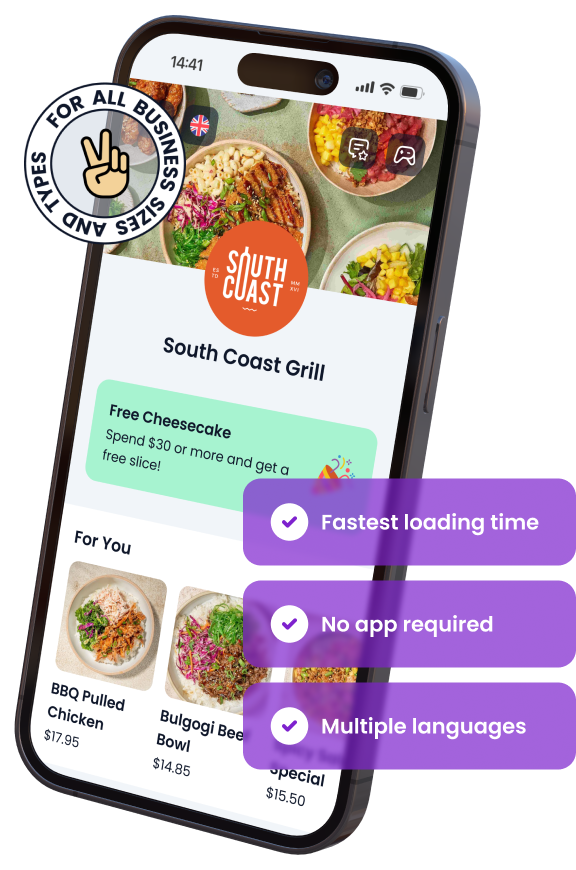
In This Article

Free AI Tools for Restaurants
TRY NOW ➜

Collect positive Google reviews
You can boost your restaurant’s credibility by effortlessly gathering Google reviews directly through your menu.


